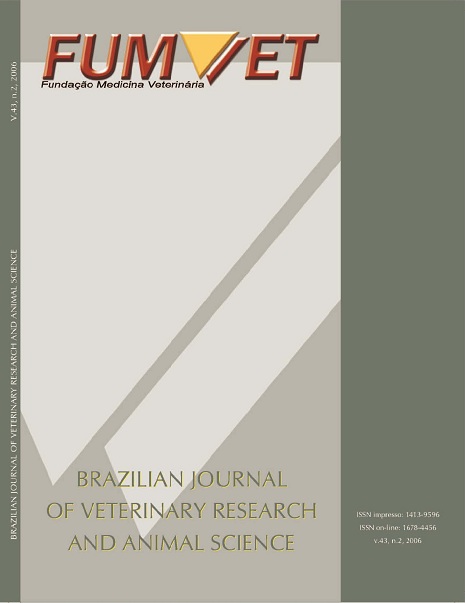Experimental chronic granulomatous inflammatory process in fish: a morphological, ultrastructural and immunocytochemical study
DOI:
https://doi.org/10.11606/issn.1678-4456.bjvras.2006.26494Keywords:
Inflammation, Fish, Nile tilapiaAbstract
The purpose of the present study was to evaluate the chronic granulomatous inflammatory process experimentally induced in Oreochromis niloticus by the inoculation of BCG and to clarify aspects of the inflammatory reaction in fish for a better understanding of the phylogeny of the process. Results obtained by light microscopy and ultrastructural analysis showed the participation of macrophages, thrombocytes, lymphocytes, eosinophils, plasma cells and foreign type giant cells in the inflammatory process. Besides these cell types, a granulomatous reaction mainly consisting of epithelioid cells was also observed ultrastructurally. These epithelioid cells developed desmosomes throughout the experiment, and also began to express receptors for cytokeratin. Both findings are immunocytochemically characteristic of epithelial cells. Pigment cells (melanomacrophages) could also be seen surrounding all the granulomatoid formation in a crescent fashion and participating in the chronic granulomatous inflammatory reaction.Downloads
Download data is not yet available.
Downloads
Published
2006-04-01
Issue
Section
UNDEFINIED
License
The journal content is authorized under the Creative Commons BY-NC-SA license (summary of the license: https://
How to Cite
1.
Matushima ER, Longatto Filho A, Kanamura CT, Sinhorini IL. Experimental chronic granulomatous inflammatory process in fish: a morphological, ultrastructural and immunocytochemical study. Braz. J. Vet. Res. Anim. Sci. [Internet]. 2006 Apr. 1 [cited 2024 Nov. 12];43(2):152-8. Available from: https://revistas.usp.br/bjvras/article/view/26494





